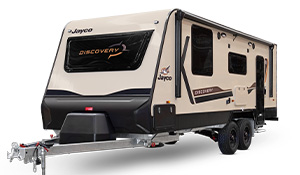A four-wheelers guide to Fraser Island
Grab nearly any guide to Fraser Island and you’ll learn that the place is a wonderland for lovers of nature, camping and adventure. It’s no lie, but I’m tipping you’ll work that out for yourself. Besides which, that flowery crap is all fine if what you want to do is read about Fraser Island or dream about Fraser Island. But if you want to actually GO to Fraser Island, there’s a whole bunch of practical stuff you need to know. So here are the tips and tricks from a Fraser Island first-timer that I wish I’d known before boarding the barge.

The island
Fraser Island is the world’s biggest sand island and stretches for about 120km from its northern tip to its southern-most reach. Along with the coast of the Queensland mainland, Fraser Island forms one side of a protected bay which contains the Great Sandy Strait and is a major whale-watching destination as Humpback Whales use the area as a nursery.
Hervey Bay is the primary mainland jumping off point and Eurong is the largest settlement on the island and one of the few places on the island where you can get a reliable mobile-phone signal.

Getting there
There are a couple of options here, but they all involve barges if you want to take a vehicle with you. There are regular services from River Head south of Hervey Bay and a third from farther down the coast from Inskip Point. The latter is quicker (and a bit cheaper) but I’m told you can’t book and it’s first come, first served which, in peak time can mean a queue of waiting vehicles kilometres long.
You can book online or just turn up at the ticket office on the mainland, and the barges from River Head take you either to Kingfisher Bay or Wanggoolba Creek. Either way it isn’t exactly cheap, and a conventional four-wheel-drive vehicle with two passengers will cost you more than $200 for the return journey from River Head to Kingfisher Bay.

Camping
Camping on Fraser Island isn’t as simple as camping probably should be. You can’t just turn up, pitch a tent and drop the money in an honesty box. Nope, you need to book beforehand as there are strict limits on how many campers each campsite will accept. That would be fine if the authorities hadn’t got rid of their admin staff and begun using a booking agency and a website. Neither seemed too switched on to me.
When booking online, don’t forget to check that there are no closures in or around the area you want to camp. On the advice of the booking agency, I made an online booking for a campsite that was closed due to burning off when I got there. And, nice folks though they seemed to be, the rangers on the island won’t be any use to you; you’ll need to drive to somewhere on the island where your mobile phone works (and that’s by no means everywhere) and then cancel your preferred spot and try to find a vacancy elsewhere. And don’t forget to print out your booking form and display it on your tent. Oh, you don’t carry a printer when camping? Apparently a hand-written note will do. Don’t forget this permit is only for your camping and you’ll need a second one for your vehicle which costs about $50 whether you stay for a day or a month. The good news is camping costs about $6 per person, per night.

Your main choices are to camp inland or by the beach, but the inland sites are better equipped with tables, toilets, some running (but not drinkable) water and coin-operated showers. The tall timber of the island’s inland also makes for calmer conditions and it really is a special place with critters of all sorts swooping down to say g’day (kookaburras and parrots) or scuttling into your tent to steal your eggs (goannas). Speaking of which, keep all food in secure, sealed containers at all times as the dingoes on Fraser are notorious for raiding eskys. And, yes, it’s illegal (and stupid) to feed them.
Due to the hassles involved in dragging a camper-trailer through soft, deep sand, most camping on Fraser Island is the old-school, tent style of deal. In most camp-grounds fires are not allowed, so you’ll need a fuel stove and don’t forget to bring everything you’re likely to need as a quick trip to the corner store for bread and milk doesn’t exist.

The tracks
Tracks on Fraser Island fall into two – and really only two – categories. You have the inland bush tracks and the beach and that’s about it. But each pose its own challenges and getting it wrong in either scenario can really ruin your day.
The inland tracks are sometimes (mainly early in the morning) hard-packed and relatively smooth, although there are some seriously rutted and lumpy sections. But as the day heats up and the sand dries out, it becomes soft and powdery. In fact, Fraser Island sand is some of the finest, most talcum-like sand I’ve seen and the old-timers will tell you that it varies from week to week and even from day to day. The tracks are, however, well defined and pretty well signposted. That said, they need to be as some make up one-way systems and don’t seem to lead off in the direction you wanted to go.

And where the tracks are two-way, they’re still really just one vehicle wide, so driving with your headlights on is a good idea as it makes you more visible to oncoming vehicles. When the inevitable does occur and two vehicles need to pass, there are plenty of passing bays where one car can pull over and let the other through. But at times, one will have to back up or steer off the track into a clearing to make the pass, and it’s here that you need to be careful as sliding back down on to the track (and into the passing vehicle) isn’t unknown. Oh, and the four-wheel-drive tourist busses don’t back up for anybody.

The biggest headache on the inland tracks is the possibility of getting bogged. Steep hills are a rarity, and where the slopes are greatest (on the busiest tracks at least) the authorities have placed permanent plastic or timber `mats’ to give you more traction. But those spots are very much in the minority (and are breaking up in places) and everywhere else, it’s a case of identifying really soft sections before you hit them and then making sure you have enough (but not too much) momentum to keep your wheels turning. Try to be in the right gear before you hit the soft patches (particularly in a vehicle with a manual transmission) as dipping the clutch to change down momentarily leaves you with no drive and about half a tonne of sand grabbing at your tyres to stop them in their tracks. For most conventional four-wheel-drives, a combination of third and fourth gear, low-range is going to be the sweet spot and don’t forget that a diff lock is an added bonus in conditions like these. Generally, it’s not a lack of engine power that will stop you, but if you’re towing a trailer or camper-trailer, then all bets are off in that regard.

The beaches are a different proposition altogether. While the inland tracks have a blanket speed limit of 30km/h (and you’re unlikely to break that limit without breaking your vehicle first) the open stretches of wide, smooth beachfront carry an 80km/h limit. Again, that’s plenty and even though you’ll now probably be in high-range, there’s no real need to go any faster than about 60.
Soft patches can crop up pretty much anywhere, any time and the hundreds of little creeks that drain into the sea on the island’s east coast (there are huge stretches of vehicle no-go areas on the west coast) can carve sharp little ditches into the sand that can be hard to see but can really upset a vehicle’s progress (and hurl your esky into the roof lining).

The beaches on Fraser are actual, proper, official roads, so it’s still passing on the left and all road rules including seat-belt wearing and blood-alcohol limits apply. There’s also a rule of thumb that says the beaches are really only suitable for driving on within two-and-a-half-hours of low tide. So a tide chart in the glovebox is a good idea and most tourist information centres in the area (and even some shops on the island) can provide this info. Getting from the bush on to the actual beach often involves a short, chopped up section of soft sand and, again, momentum is your friend.

It’s also worth mentioned that the time constraints imposed by the tides (and the huge number of people that love Fraser Island) mean that the beaches can sometimes look like freeways. So courtesy is the key. Stay to the left and let faster vehicles through and if you do want to pull over and stop, indicate to do so. When you are stopped, it’s good practice to park your car at 90-degrees to the direction of travel so that other vehicle can see that you’re stopped, and not about to pull back on to the beach. Do I even need to mention that it’s dopey to drive through the salt-water at high speed? Well, it is, and the smart money says drive on the hard-packed beach sand between the surf and the high-water mark.

Your vehicle
It sounds stupid, but make sure your vehicle is reliable and starts first hit of the key. The tides move fast around here and more than one four-wheel-drive has got stuck or broken down in the past and been consumed by the rising tide. It’s also worth mentioning that only high-clearance four-wheel-drives cut in on Fraser and makes and models with a transfer-case were the only ones I saw chugging around in the sand. Will your RAV4 handle it? Er, no.
A winch is a nice thing to have for the inland tracks (there are LOTS of trees to winch off) but make sure you have a tree protector. In the absence of a winch, sand ladders or sand boards will usually get you out, but don’t forget to throw in a shovel as well. Sometimes, a simple push from the occupants of another vehicle will get you unstuck, too, but a tow is usually not out of the question. Just make sure you have your own snatch-strap (it’s just good manners).

By far the biggest thing you need to do to your vehicle is reduce the air pressure in each tyre. This allows the tyres to `bag out’ and present a wider, longer footprint that helps you float over the sand rather than disappear into it. About 18 psi is about the sweet-spot and a good starting point, but you can go as low as 12 psi or even a bit lower if the sand is really soft. Just don’t forget to pump `em up again once you’re off the barge and back on the mainland. The next job is to thoroughly wash your vehicle to get the salt off it. A few commercial car-washes in and around Hervey Bay have specialised, high-pressure nozzles that spray under the car and are well worth the $8 or so they cost.
Words and Photos by Dave Morley









